How to use the Elemental Composition application in MassLynx - WKB17472
Article number: 17472
OBJECTIVE or GOAL
This article shows how use the basic functionalities of the EleComp application in MassLynx. This application is used to investigate the isotopic distribution and chemical formula of a compound of interest within an exact mass tolerance.
ENVIRONMENT
- MassLynx 4.1
- MassLynx 4.2
- Tof instrument
- Time-of-flight technology
- Elemental Composition (EleComp)
PROCEDURE
- Display the desired mass spectrum in centroid data. Ensure that the calibration and lockspray profiles are set up successfully prior to data acquisition.
- Select Tools > Elemental Composition (Figure 1).
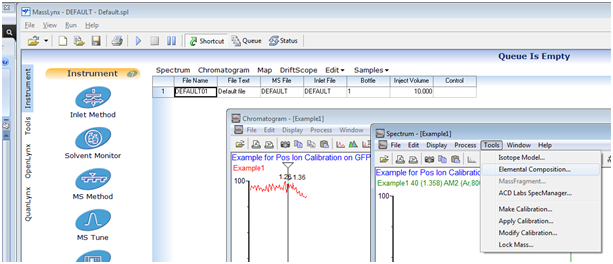
FIGURE 1
- Select Use Single Mass.
- Right-click on the monoisotopic mass of interest. [This should update automatically the EleComp Parameters dialog box field text with the selected exact mass. It is also possible to manually type the mass of interest into the EleComp Parameters dialog box.]
- Click OK. A new Elemental Composition window opens.
- On the Elemental Composition menu, go to Process > Set Parameters (Figure 2).
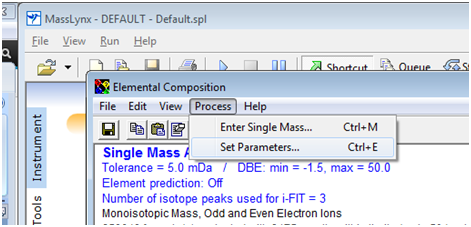
FIGURE 2
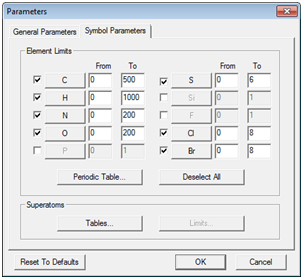
FIGURE 3
- Click on the Symbol Parameters tab (Figure 3).
- Select the elements of interest and their limits. Figure 4 shows an example of settings made for an investigation of organic compounds that might contain one or several bromide elements. You can remove or include element(s) of interest found in the periodic table.
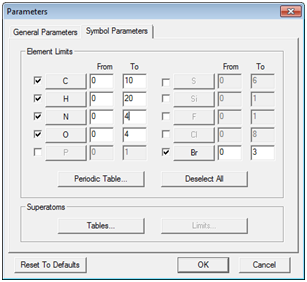
FIGURE 4
- Taking the bromide element, for example, it is possible to require a more advanced search. Click on the "Periodic Table" (Figure 4).
- Click on the bromide symbol (set as an example). You can then select a desired Br isotope, if required (Figure 5).
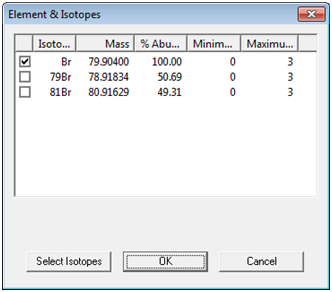
FIGURE 5
- When parameters are set as expected, click OK to validate them. [The elemental composition window should populate with suggested formula and calculated exact masses, which are ranked according to their associated probability values (such as i-Fit, Fit Confidence %), as shown in Figure 6.]
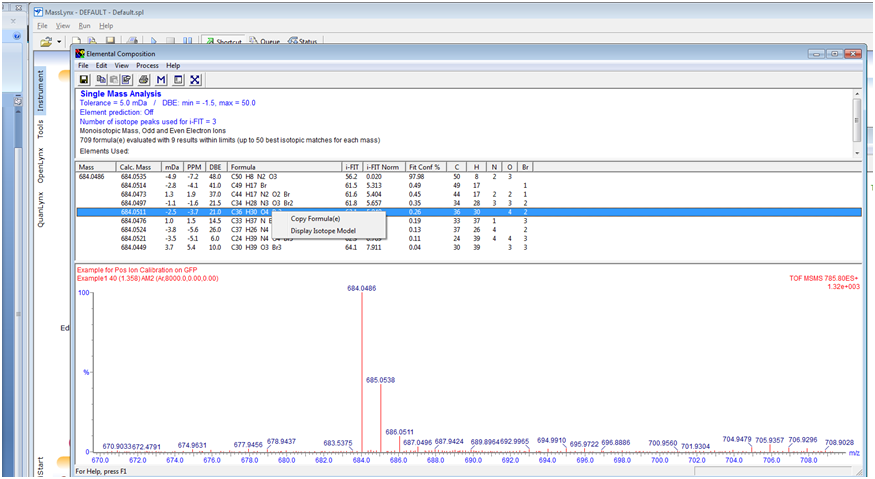 FIGURE 6
FIGURE 6
- Select the formula of interest by left-clicking, and then right-click to display the isotope model suggested by the software. Compare with the isotopic ratio shown in the data (Figure 7). [If no formula sis uggested by the software, it may be useful to readjust the element limit values of the Symbol Parameter tab or the mass accuracy tolerance.]
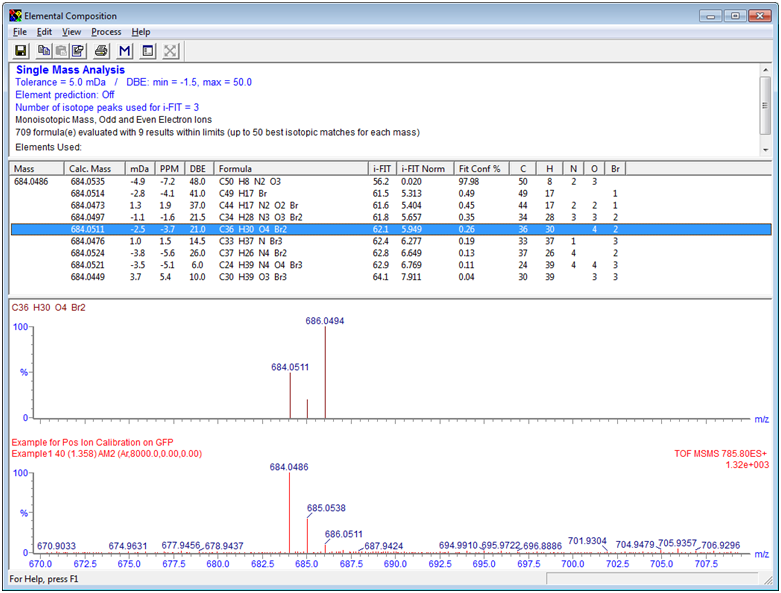 FIGURE 7
FIGURE 7
- To allow the display of a new isotope model for another suggested compound, right-click anywhere on the data or on the current isotope model, and then click “Remove Isotope Models”. You can now select and display another isotope model suggested by the software.
ADDITIONAL INFORMATION

